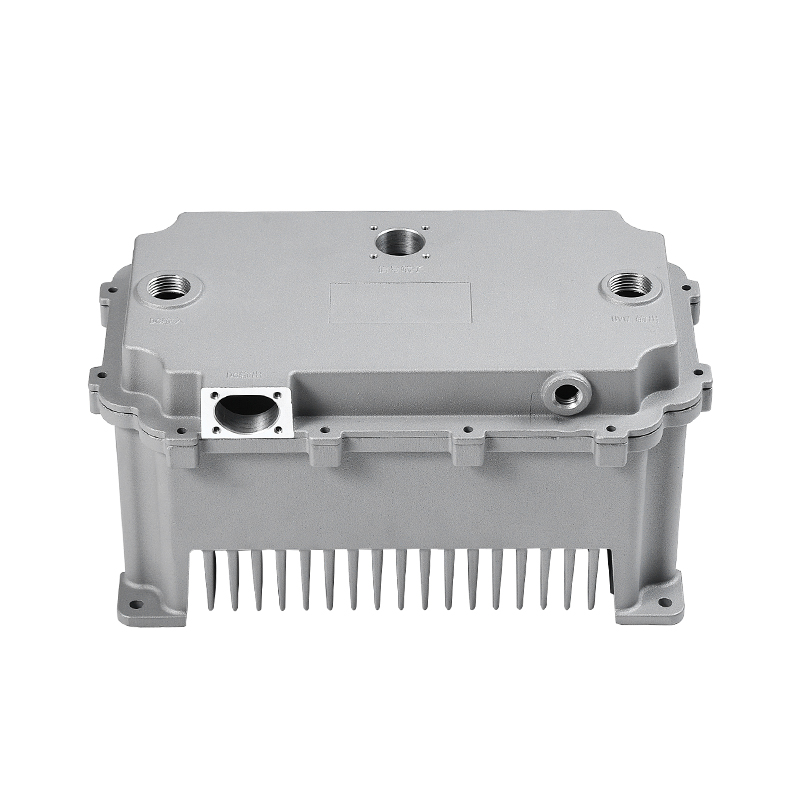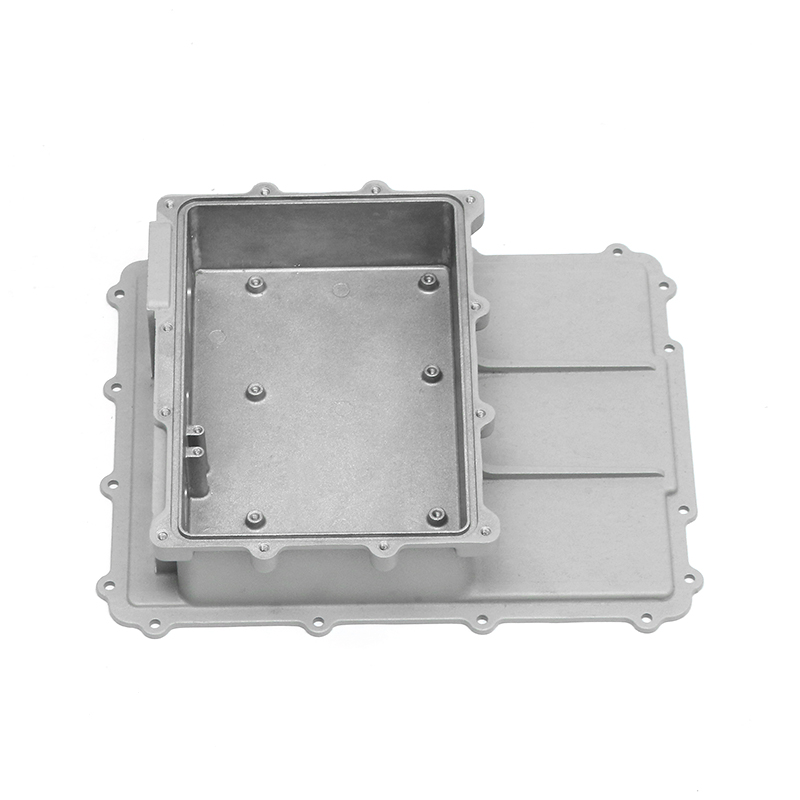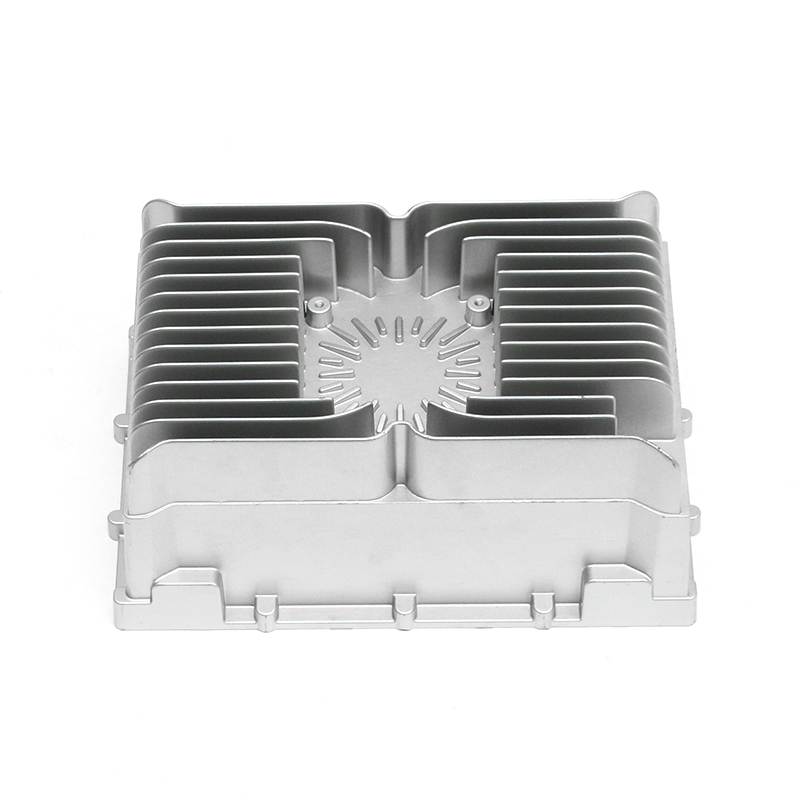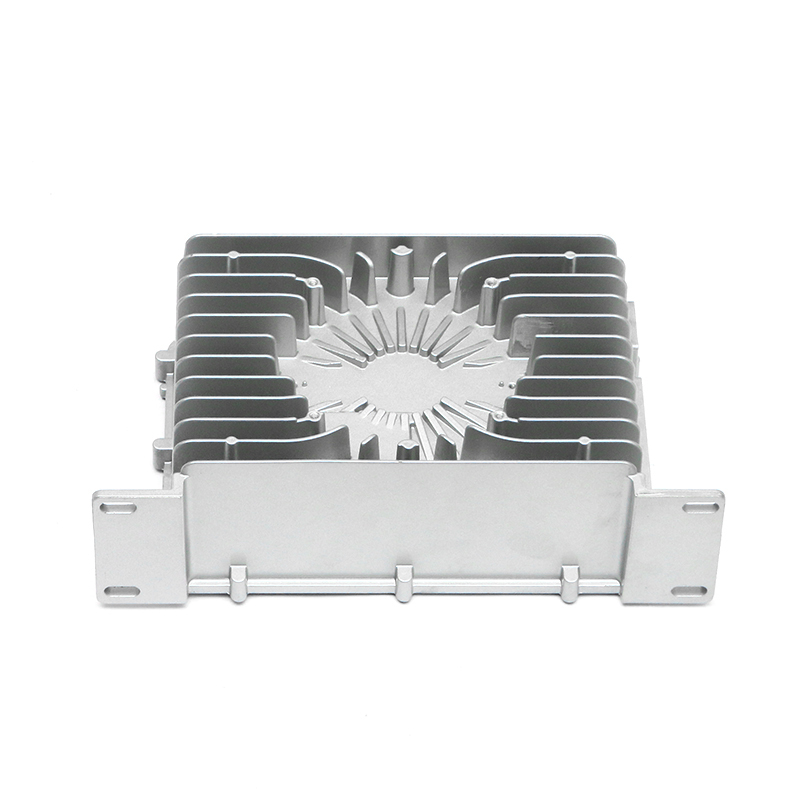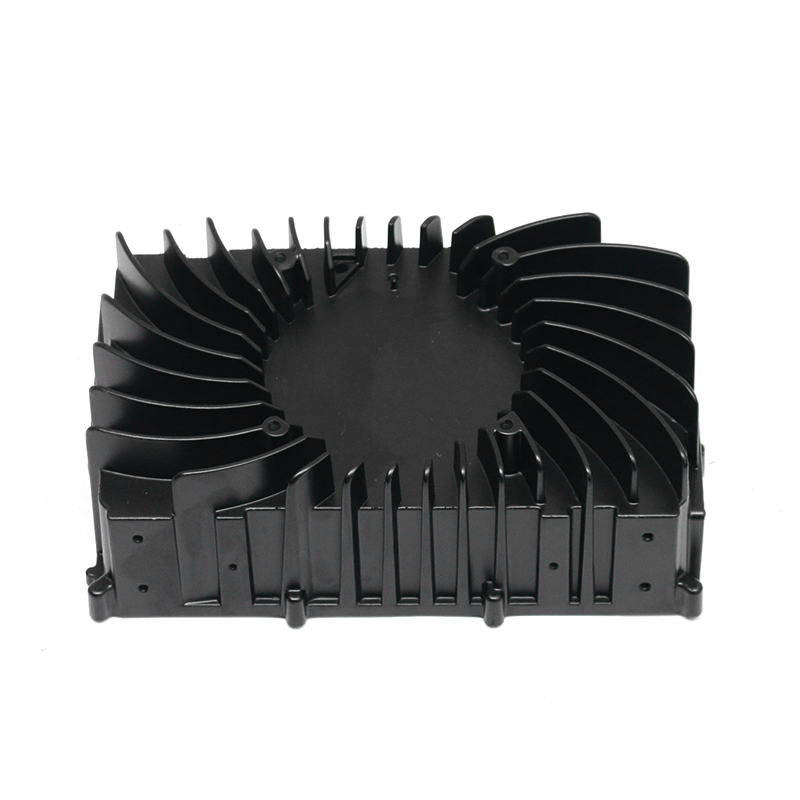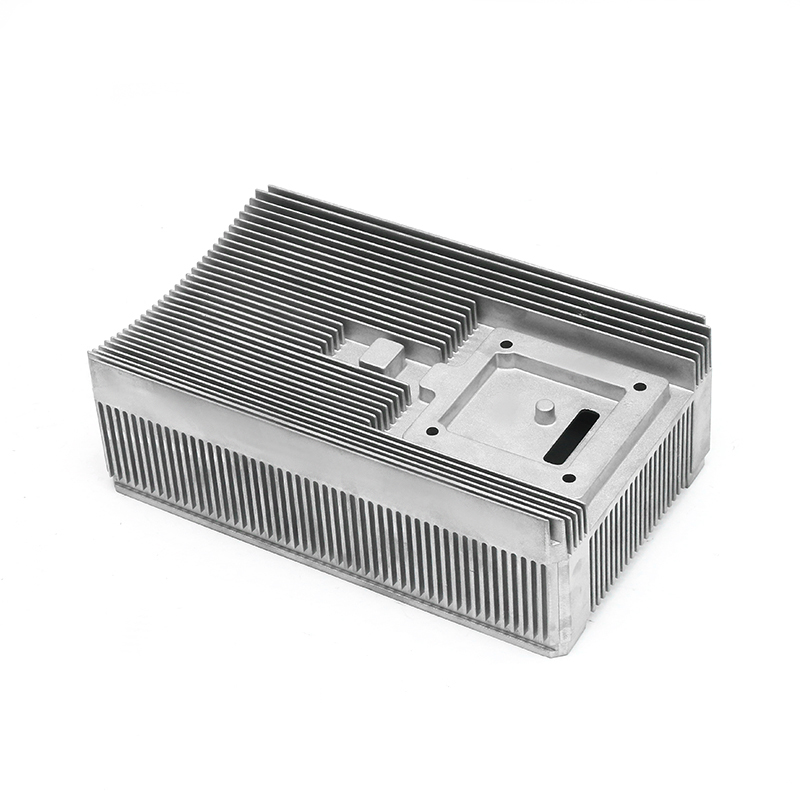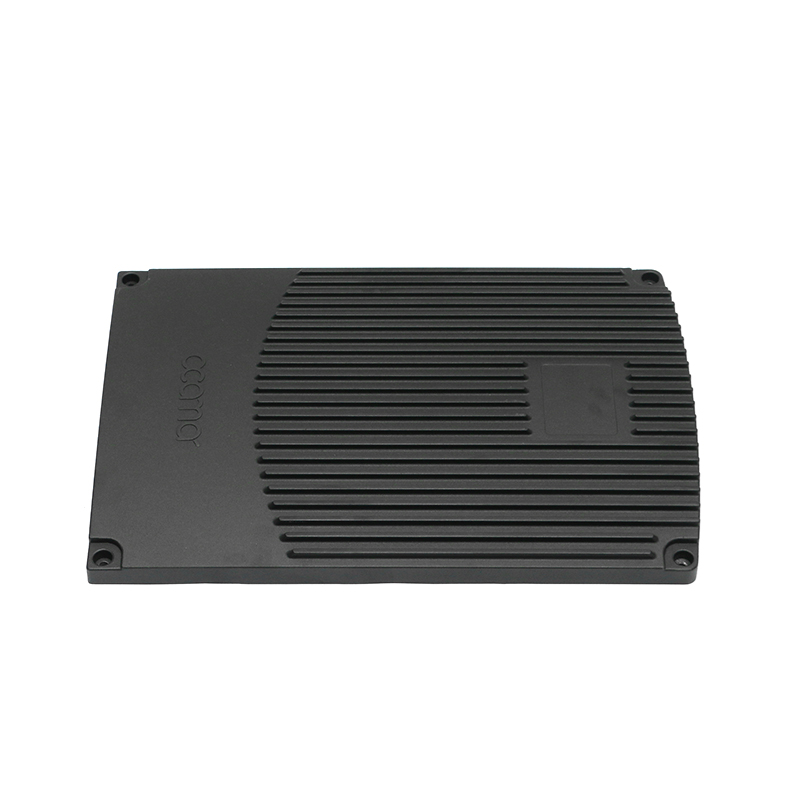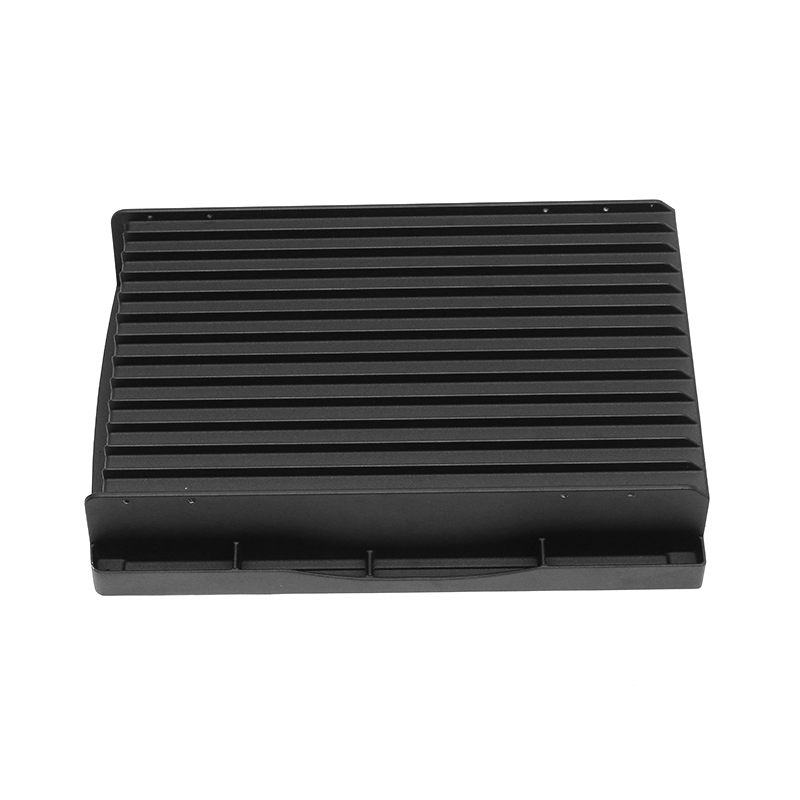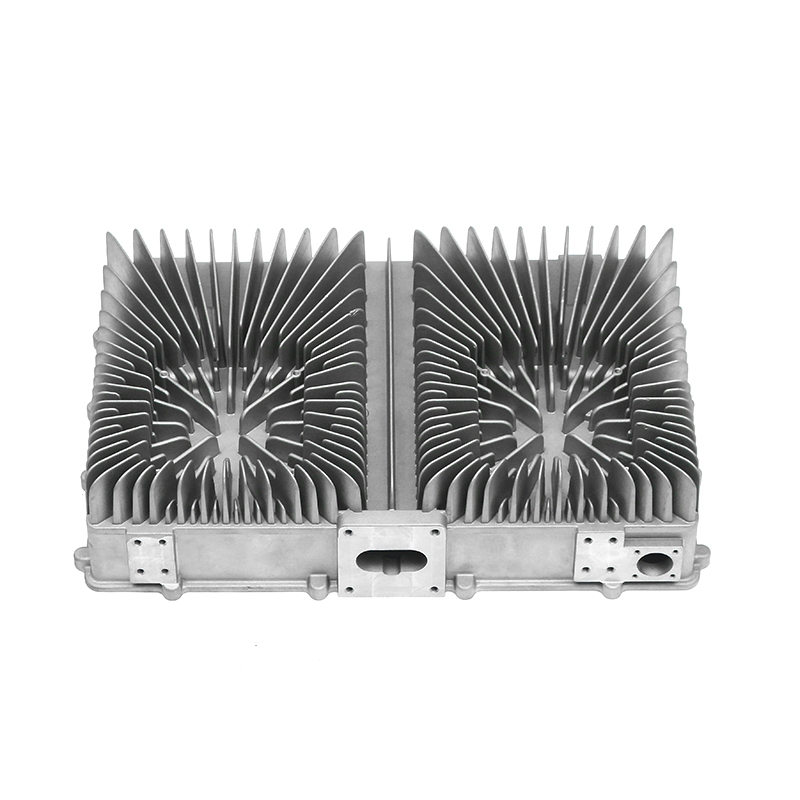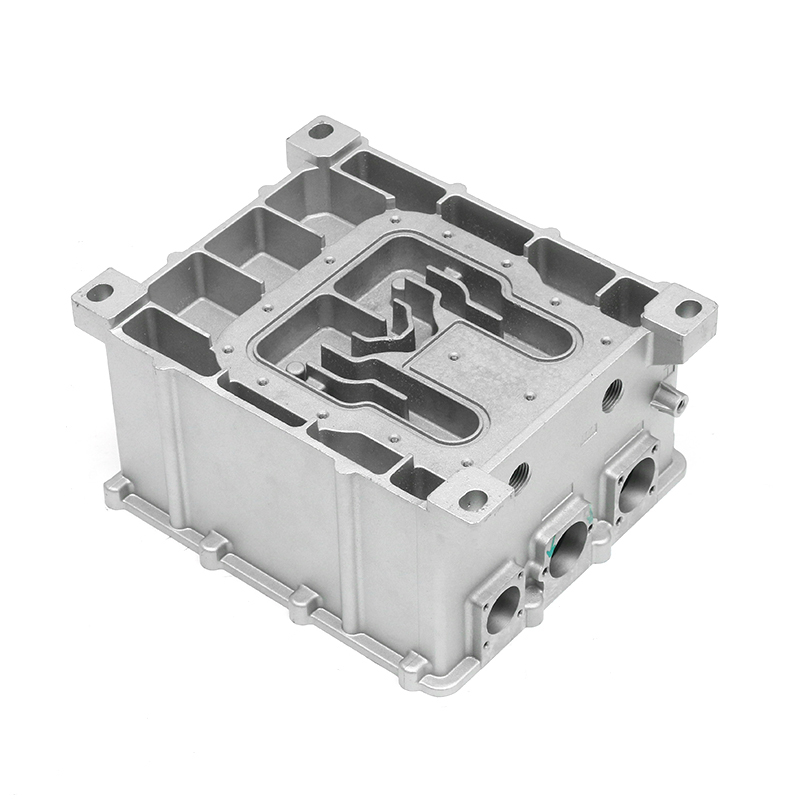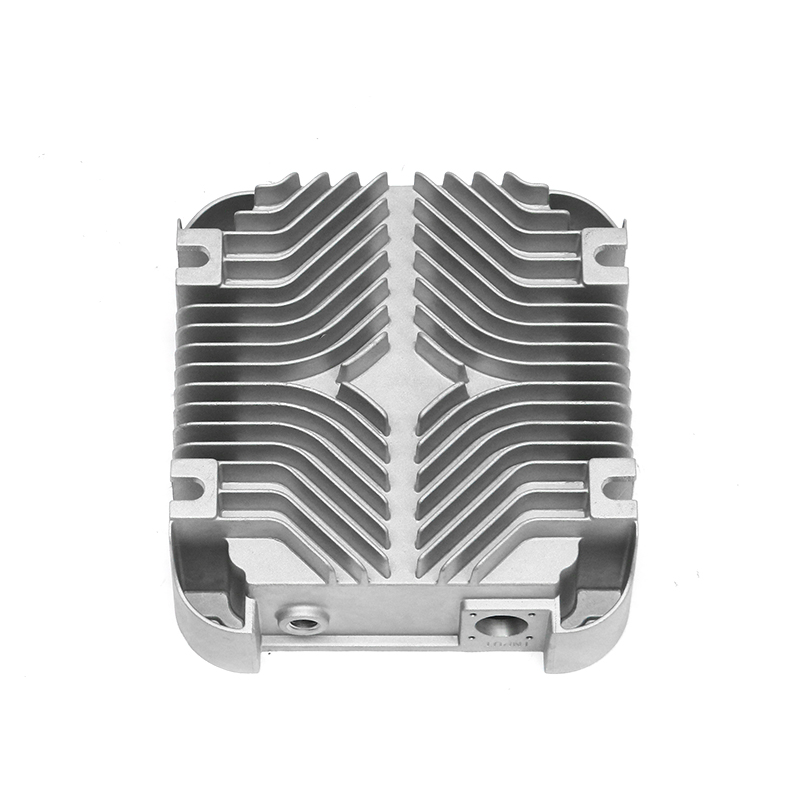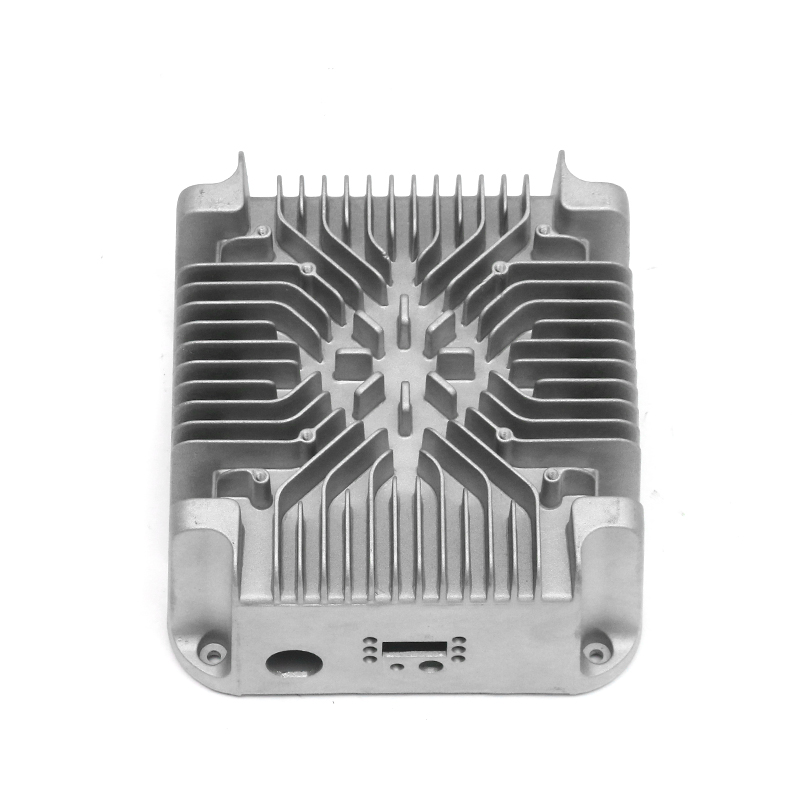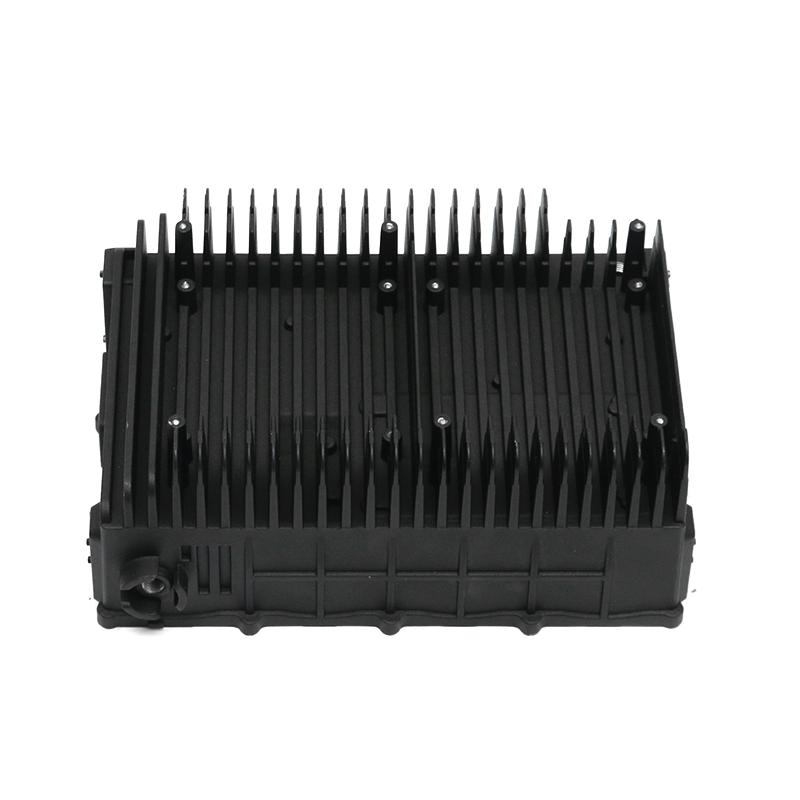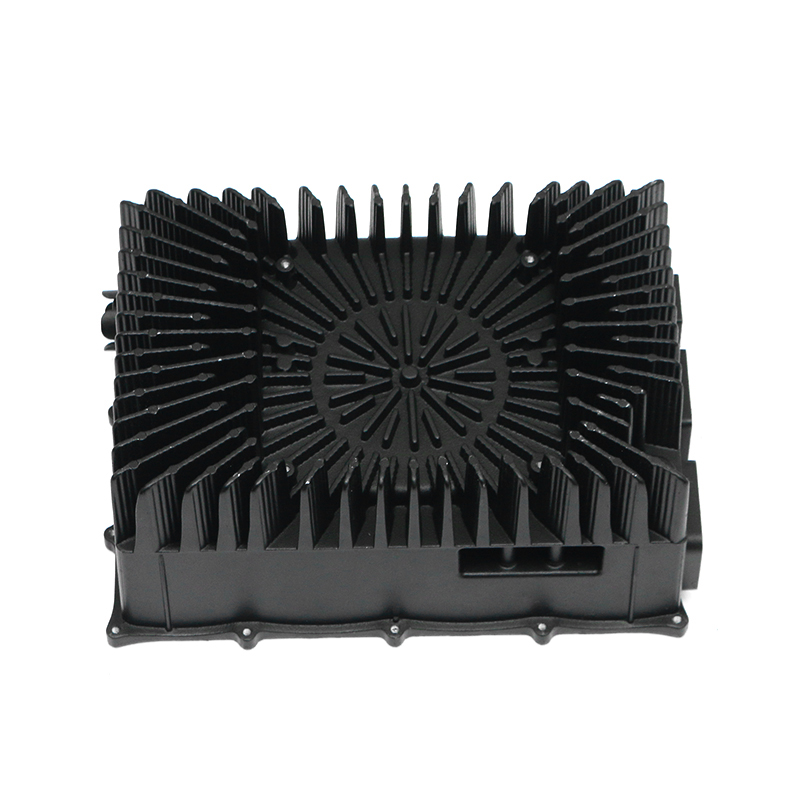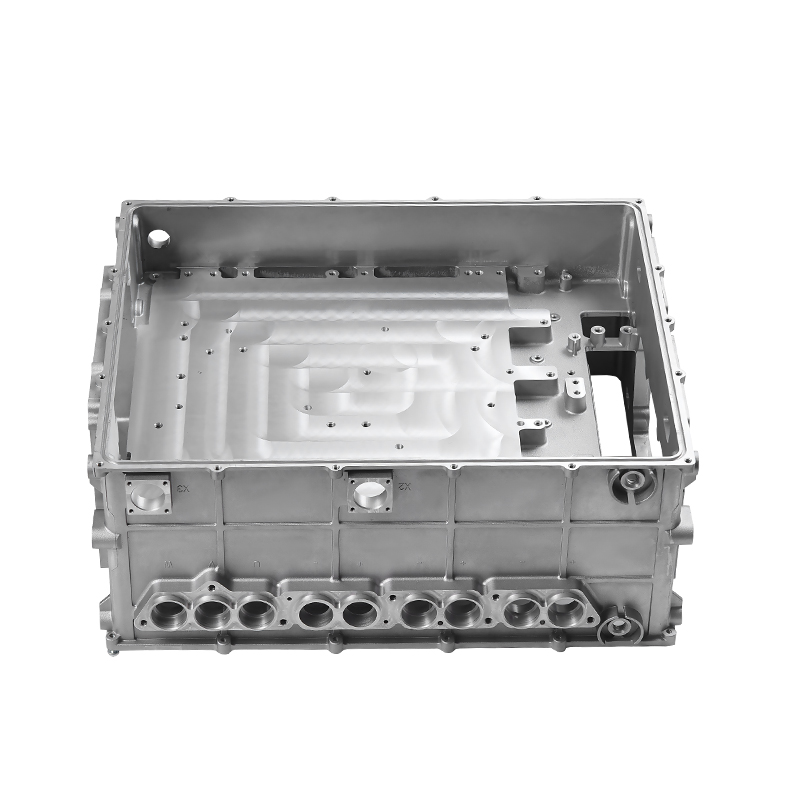Working Principle
New Energy Electric Control Water Cooling Series Die Castings are mainly used in electric vehicles, power equipment, energy storage systems and other fields. They combine the needs of the electric control system and the water cooling system to ensure that the equipment can maintain a stable temperature when working under high load and prevent overheating from affecting performance. Its core working principle is to effectively conduct and dissipate the heat generated by the electric control system to the external environment through water cooling technology to ensure the normal operation of the system. Through reasonable die casting design, the water cooling liquid can effectively contact and take away the heat, thereby achieving a good heat dissipation effect.
Component structure and function
New Energy Electric Control Water Cooling Series Die Castings are usually composed of multiple structural components, including heat dissipation pipes, interface connection parts, heat conduction plates, sealing rings, etc. Each part has a specific function:
Heat dissipation pipes
The heat dissipation pipes are the core part of the water cooling system and are responsible for transporting the coolant to the heat source. These pipes are usually filled with coolant with good thermal conductivity. Through efficient heat exchange design, they can quickly absorb and transfer heat.
Interface connection part
The interface connection part is used to connect the water cooling system with the electric control system. Through the design of a reasonable connection port, it is ensured that the coolant can smoothly pass through the system and maximize contact with the part that needs heat dissipation.
Thermal conductive plate
The function of the thermal conductive plate is to evenly transfer the heat generated by the electronic control system to the coolant. Its surface is usually treated with high thermal conductivity materials to improve the heat exchange efficiency.
Sealing ring
The sealing ring is mainly used to ensure the airtightness of the water cooling system and prevent coolant leakage. In high temperature and high pressure working environments, the role of the sealing ring is particularly important. It ensures that the coolant circulates throughout the system without leakage.
Heat exchange process of water cooling system
Heat transfer from heat source
In new energy electronic control systems, electronic control components (such as battery management systems, drive controllers, etc.) generate a lot of heat during operation. In order to avoid overheating affecting system stability, this heat needs to be effectively taken away through the water cooling system. The heat conductive plate in the die casting absorbs this heat and transfers it to the coolant.
Coolant absorbs heat
The coolant flows in the heat dissipation pipe of the die casting and absorbs this heat by contacting with the electronic control components. The coolant is generally a liquid mixed with water and antifreeze, and its high thermal conductivity ensures that heat can be transferred quickly.
Heat transfer to the outside world
The coolant continues to flow through the pipe after absorbing heat, and finally transfers the heat to external devices such as radiators or heat sinks. These devices are responsible for dissipating the heat taken away by the coolant into the air to complete the heat exchange process.
The role of die castings in water cooling systems
The role of die castings in water cooling systems is mainly reflected in the following aspects:
Provide structural support
The die castings produced by the die casting process have good strength and stability, and can work stably under high temperature and high pressure environments. The structure of the die casting usually includes multiple heat conduction plates and water cooling pipes, which are closely matched to ensure the smooth operation of the entire water cooling system.
Optimize heat exchange effect
The design of die castings usually takes into account the uniformity of heat conduction. The surface of the heat conduction plate is mostly treated with special processes, which can optimize the heat exchange effect and enable the coolant to absorb and transfer heat more efficiently.
Enhance system sealing
The precise structural design of the die casting can ensure the sealing of the water cooling system and prevent coolant leakage. A water cooling system with good sealing can not only improve the heat exchange efficiency, but also avoid contamination or damage in the system.
The criticality of thermal management
In new energy systems, especially electric vehicles, the heat dissipation management of the electronic control system is crucial. Excessive temperature will not only affect the working efficiency of the electronic control components, but may also shorten their service life. Therefore, the water cooling system plays a vital role in this process. Through an efficient water cooling system, the new energy electronic control water cooling series die castings can help the electronic control components stay within a safe temperature range and ensure the stable operation of the system.
Collaboration between the electronic control system and the water cooling system
The electronic control system and the water cooling system need to work highly together to ensure the optimal heat dissipation effect. The water cooling system not only relies on the structure of the die casting to conduct heat, but also needs to consider multiple factors such as the flow rate of the liquid and the heat dissipation efficiency. The design of the die casting needs to ensure that the coolant can flow at an appropriate speed to ensure that the heat can be quickly and evenly transferred to all parts of the system.
Improvement of heat dissipation efficiency by optimized design
Improvement of die casting design
In order to improve the heat dissipation effect, the design of the new energy electronic control water cooling series die castings usually combines advanced thermal management theory and fluid mechanics knowledge. In some high-end applications, microchannels or fluid optimization structures may also be designed inside the die casting to improve the cooling efficiency by improving the flow channel design.
Material selection
In addition to design optimization, material selection is also a key factor in improving heat dissipation. Die castings usually use materials with good thermal conductivity, such as aluminum alloy or copper alloy. The thermal conductivity of these materials can effectively increase the speed of heat transfer and ensure that the coolant can take away heat more effectively.
